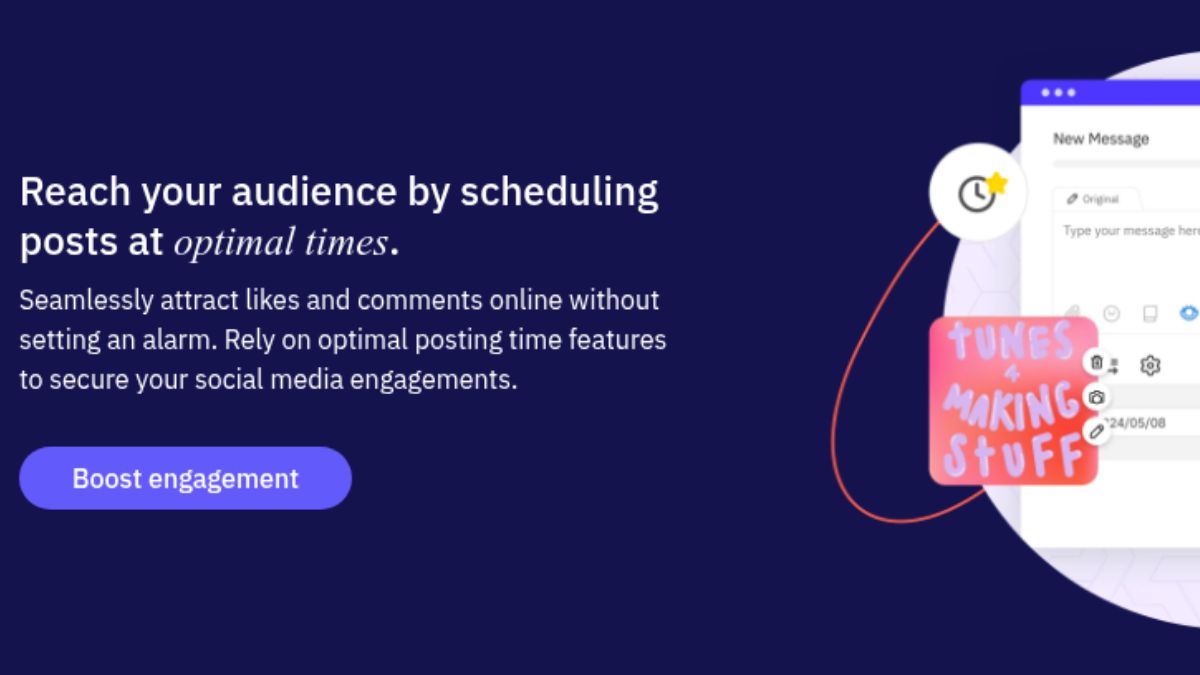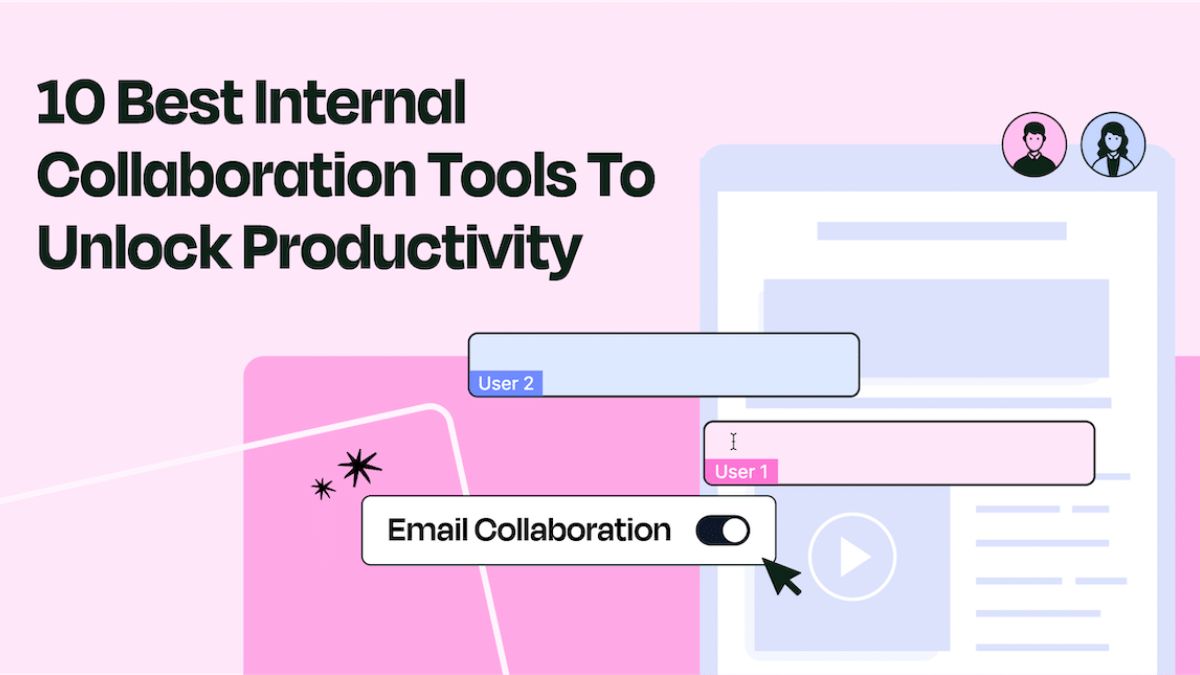DIGITAL MARKETING
10 Steps for a Successful Salesforce Implementation (2025)

A poorly executed implementation can lead to low adoption rates, data inefficiencies, and integration challenges, causing businesses to fall short of their expected ROI. Research shows that CRM projects have a failure rate of 30–70%, often due to poor planning, lack of training, or resistance to change.
To avoid these pitfalls, businesses must take a structured, strategic approach when deploying Salesforce. In this guide, we will walk through 10 critical steps to ensure a smooth and successful Salesforce implementation in 2025.
Step 1: Define Clear Goals and Objectives
Before diving into Salesforce implementation, businesses must clearly define their objectives. Simply deploying the CRM without understanding its intended impact will result in confusion, inefficiency, and low adoption.
To establish clear goals, ask:
- What business challenges are we trying to solve with Salesforce?
- How will we measure success?
- What KPIs (Key Performance Indicators) should we track?
SMART Goal-Setting for Salesforce Implementation
Use the SMART (Specific, Measurable, Achievable, Relevant, Time-bound) framework to ensure your objectives are well-structured:
✅ Specific – Define precise goals, such as improving sales forecasting accuracy.
✅ Measurable – Track success metrics like lead conversion rates or response times.
✅ Achievable – Set realistic goals based on your business capabilities.
✅ Relevant – Ensure Salesforce aligns with your broader business strategy.
✅ Time-bound – Set deadlines for achieving milestones.
By starting with clear, well-defined objectives, you lay the foundation for a purpose-driven and results-oriented Salesforce implementation.
Step 2: Assemble the Right Implementation Team
Salesforce implementation is not a one-person job. To ensure success, you need a cross-functional team that includes:
- Project Manager – Oversees the implementation timeline and ensures milestones are met.
- Salesforce Administrator – Manages user access, configurations, and customizations.
- Developers – Customize Salesforce with Apex code and integrate third-party apps.
- Business Analysts – Ensure business needs align with Salesforce capabilities.
- Department Representatives (End-Users) – Provide insights on workflow requirements.
For a deeper dive into how AI can enhance your Salesforce implementation, check out a detailed guide on Salesforce CRM Implementation AI.
Stakeholder Engagement for a Smooth Transition
Engaging the right stakeholders ensures that all departments have a say in the implementation process, leading to higher adoption rates and fewer roadblocks. Without proper stakeholder involvement, businesses risk misalignment between Salesforce functionalities and actual user needs.
Step 3: Choose the Right Salesforce Edition and Licenses
Salesforce offers multiple editions, each with unique features and pricing models. Choosing the wrong edition can lead to overspending on unnecessary features or lacking essential functionalities.
Overview of Salesforce Editions
- Essentials – Best for small businesses with basic CRM needs.
- Professional – Suitable for mid-sized businesses needing advanced sales automation.
- Enterprise – Offers extensive customization and automation, ideal for growing companies.
- Unlimited – Includes premium support, AI-driven insights, and unlimited customizations, making it perfect for large enterprises.
How to Choose the Right Edition
- Evaluate your business needs – List the must-have features required for your organization.
- Consider future scalability – Choose an edition that can accommodate business growth.
- Factor in licensing costs – Ensure it fits within your budget without hidden costs.
Selecting the right Salesforce edition ensures that you maximize value without overspending.
Step 4: Plan and Prepare for Data Migration
Data is the backbone of any CRM system. Poor data migration can lead to duplicate records, missing information, and inaccurate reporting, ultimately hindering decision-making.
Best Practices for a Smooth Data Migration
✅ Audit existing data – Identify duplicate, outdated, or inconsistent records before migration.
✅ Map data fields properly – Ensure all critical information (e.g., leads, accounts, opportunities) is transferred correctly.
✅ Use data migration tools – Salesforce Data Loader, Import Wizard, and third-party ETL tools (Extract, Transform, Load) help streamline the process.
✅ Test in a sandbox environment – Before migrating all data, test the process on a small dataset to identify potential issues.
A well-structured data migration plan prevents errors, inefficiencies, and disruptions after Salesforce goes live.
Step 5: Customize and Configure Salesforce to Fit Business Needs
Salesforce is highly customizable, but over-customization can lead to unnecessary complexity. Striking the right balance between standard configurations and custom development is key.
Configuration vs. Customization
- Configuration – Uses Salesforce’s built-in features like Workflow Rules, Page Layouts, and Process Builder to meet business needs.
- Customization – Involves coding (Apex, Visualforce, Lightning Components) to develop unique functionalities beyond Salesforce’s standard capabilities.
Key Areas of Customization
✅ Custom Objects & Fields – Tailor Salesforce to store specific business-related data.
✅ Workflow Automation – Use Flows and Process Builder to automate repetitive tasks.
✅ Role-Based Access Control – Restrict access to sensitive data based on user roles.
Ensuring proper customization helps businesses boost efficiency without making the system overly complicated.
Step 6: Integrate Salesforce with Other Business Tools
For Salesforce to deliver its full potential, it must integrate with other essential business tools such as:
- ERP Systems (SAP, Oracle, NetSuite) – Sync customer and financial data.
- Marketing Automation Platforms (Pardot, HubSpot, Marketo) – Improve lead nurturing.
- Customer Support Platforms (Zendesk, ServiceNow) – Provide a unified customer view.
How to Ensure Seamless Integration
✅ Use Salesforce APIs – REST and SOAP APIs facilitate smooth communication between systems.
✅ Leverage Middleware Solutions – Platforms like MuleSoft and Dell Boomi simplify integration.
✅ Maintain Data Consistency – Establish data synchronization protocols to prevent duplication.
By integrating Salesforce with other tools, businesses create a centralized system that enhances efficiency and decision-making.
Step 7: Develop a User Training and Adoption Plan
Even the most powerful Salesforce implementation will fail if users don’t adopt it. Training and onboarding are essential to maximize adoption rates and ensure employees leverage Salesforce effectively.
Strategies for Effective Training
✅ Role-Based Training – Customize sessions based on user roles (sales reps, managers, admins).
✅ Interactive Learning – Use hands-on workshops, videos, and interactive tutorials.
✅ Gamification Techniques – Implement badges, leaderboards, and incentives to encourage engagement.
✅ Ongoing Support – Provide a dedicated helpdesk or Salesforce knowledge base for continuous learning.
A well-executed training program fosters higher adoption rates and improves CRM efficiency.
Step 8: Test Everything Before Deployment
Before going live, thorough testing ensures that Salesforce functions correctly, workflows are optimized, and integrations work seamlessly. A minor oversight in testing can lead to disruptions, data loss, or workflow failures after deployment.
Types of Testing to Conduct
✅ Unit Testing – Ensures individual components (fields, validation rules, automation) work as expected.
✅ User Acceptance Testing (UAT) – Involves end-users testing the system to confirm that it meets business needs.
✅ Integration Testing – Ensures smooth data flow between Salesforce and other platforms.
✅ Performance Testing – Tests system response times and load capacity under real-world conditions.
Best Practices for Successful Testing
- Test in a Sandbox Environment – Run tests in a safe, non-production environment to identify and fix errors before deployment.
- Use Test Scripts – Document expected outcomes for different workflows to ensure consistency in testing.
- Collect User Feedback – Involve key stakeholders in the testing phase to gather insights on usability and performance.
A well-tested Salesforce implementation significantly reduces post-launch issues, enhancing system stability and user experience.
Step 9: Go Live with a Phased Rollout Approach
Going live is an exciting milestone, but a gradual rollout approach reduces risks compared to a big-bang launch.
Why Choose a Phased Rollout?
- Minimizes Disruptions – Teams can transition gradually without overwhelming employees.
- Allows for Early Adjustments – Identifies unexpected challenges and allows for improvements before a full rollout.
- Boosts User Confidence – Employees have time to adapt, reducing resistance to change.
How to Implement a Phased Rollout
✅ Start with a Pilot Group – Select a small team to test the system in real-world scenarios.
✅ Monitor Performance & User Feedback – Use reports and surveys to assess adoption and satisfaction.
✅ Gradually Expand to Other Departments – After successful adoption in the pilot group, roll out Salesforce company-wide.
Taking a cautious, step-by-step approach ensures fewer technical issues, better user adoption, and a smoother transition.
Step 10: Continuously Monitor and Optimize
Salesforce implementation doesn’t end at deployment. To ensure long-term success, businesses must continuously monitor, optimize, and refine their Salesforce environment.
Ongoing Maintenance Best Practices
✅ Track Performance Metrics – Use Salesforce dashboards and reports to analyze adoption rates, sales performance, and user engagement.
✅ Gather User Feedback – Regularly check in with teams to identify challenges and areas for improvement.
✅ Stay Updated with Salesforce Releases – Salesforce rolls out three major updates per year—staying current ensures you leverage the latest features.
✅ Optimize Workflows Over Time – Adjust automation rules, data processes, and integrations as business needs evolve.
Why Continuous Improvement Matters
- Adapts Salesforce to Business Growth – Ensures Salesforce evolves alongside your company’s changing needs.
- Enhances Efficiency & Productivity – Regular optimization prevents outdated workflows from slowing down operations.
- Maximizes ROI – Ongoing improvements help businesses extract maximum value from their Salesforce investment.
By making Salesforce optimization an ongoing process, companies can sustain efficiency, drive revenue growth, and improve user satisfaction.
Conclusion
Salesforce implementation is more than just deploying software. It’s about aligning technology with business strategy, ensuring user adoption, and continuously optimizing for long-term success.
The key takeaway? A structured, phased, and user-focused approach ensures Salesforce becomes a powerful asset rather than a costly challenge.
If you’re considering a Salesforce implementation in 2025, start with a clear strategy, the right team, and a commitment to continuous improvement—and you’ll unlock the full potential of this leading CRM platform.
DIGITAL MARKETING
How to Pick a Reliable Website to Buy Social Media Likes

Engagement is the most important element of social media success, and likes are the most important element in increasing credibility and visibility. Whether you are a business, content creator, or influencer, buying likes can assist in creating social proof and increasing the visibility of your content. But with numerous websites providing social media likes, it is imperative to select a reliable provider to maintain security, authenticity, and long-term gains.
Seek for Authenticity and Real Engagement
The first and the most significant consideration in choosing a site is that it must deliver real likes from genuine users. There are some services that employ bots or fake accounts, which result in artificial engagement without any real worth.
In order to prevent this, go for sites that ensure likes from active and legitimate accounts. You may determine the legitimacy of a service by checking reviews, observing openness in their strategy, and studying sample data from the only site that sells real likes.
Explore Customer Reviews and Reputation
A legitimate site should possess good customer feedback and a superb reputation. Check online reviews, testimonials, and ratings on third-party review sites before buying. Social media groups and discussion forums can also be good predictors of user experiences with different services.
Be cautious of sites with very low customer reviews or no reviews at all. A company with good customer testimonials and a track record of successful customers is in a better position to provide quality engagement and protect your social media account from potential risks.
Look for Privacy Policies and Secure Payment Options
Security is a concern when purchasing social media likes since you may be prompted to provide payment details or account credentials. A good site should offer secure payment options, such as credit card processing that uses encryption. Avoid using sites that ask for your social media password since they will most likely be scams or lead to account hacking.
Also, look at the privacy policy of the website to ensure that your data will not be made accessible to third parties. Good services respect customers’ privacy and clearly state their terms of service.
Assess Delivery Speed, Packages, and Pricing
Though cost is significant, very cheap services are probably signs of low-quality interaction or likes generated by bots. Evaluate several providers and compare their prices relative to the value they bring. Trusted websites will give you clear-cut pricing and options for several package deals so that you can select what suits your requirements best.
Be careful of the speed of delivery too—likes that appear too suddenly tend to look fabricated and get flags on social media sites. Organic, slow-built likes are always better as it keeps your reputation intact and also prevents algorithm punishment.
Check Customer Support and Refund Policies
A good site should have great customer support and a reasonable refund policy. Check for services that offer support via email support, live chat, or a separate help center. If a site has unclear contact information or is slow to respond to questions, it might not be reliable.
Also, check if they have a money-back guarantee in case of low-quality likes or failed services. Platforms that value quality service will have open policies and responsive customer care to guarantee customer satisfaction.
Choosing the only site that sells real likes can help boost engagement, but it’s important to invest in reputable companies that prioritize real likes, gradual delivery, and account security. When done correctly, purchasing likes can be a valuable part of your social media growth strategy, enhancing your online presence and credibility.
DIGITAL MARKETING
How Custom Internal Tools Can Improve Team Collaboration and Productivity

What Are Custom Internal Tools?
Custom internal tools are software solutions designed to meet a company or organization’s unique needs. Unlike off-the-shelf software, these tools are tailored to optimize team workflows and improve efficiency. By addressing a business’s specific challenges, custom tools help streamline processes, reduce time spent on repetitive tasks, and enhance collaboration across departments. Whether for project management, communication, or data processing, custom tools enable teams to focus on their core responsibilities and deliver better results.
With the right custom tools, teams can automate manual tasks and create more seamless workflows. For example, Pythagora offers customizable automation solutions that allow businesses to enhance their development and testing processes. These tailored tools help employees save time, improve productivity, and ensure smoother collaboration. Integrating customized tools into daily activities can help organizations create a more productive and efficient workplace, resulting in improved decision-making and quicker problem-resolution.
Benefits for Team Collaboration
The implementation of custom internal tools significantly enhances team collaboration by breaking down silos within an organization. These tools centralize information and provide a unified platform for team interaction, essential in facilitating smooth communication. Companies that improve their communication strategies see a substantial increase in productivity—up to 25%. Custom tools eliminate the confusion and redundancy that often arise from fragmented communication channels by offering a centralized location for sharing resources, managing tasks, and tracking project progress. This centralized approach streamlines operations and fosters a collaborative atmosphere where team members feel more connected and aligned toward common goals, ultimately driving higher innovation and productivity.
Enhancing Productivity
Tailored internal tools enhance productivity by streamlining regular tasks and allowing employees to concentrate on more important work. These tools’ capacity to optimize processes is unmatched, as they decrease redundancies and cut down the time spent on repetitive tasks. Employing automation through custom software can yield up to a 20% improvement in operational efficiency. This is significant when considering the competitive landscape, as businesses seek to optimize resources and increase output. By providing solutions tailored to business needs, companies can streamline decision-making processes and act quickly on emerging opportunities, thus minimizing bottlenecks. Employees benefit from a more efficient workflow, which maximizes productivity and enhances job satisfaction as they engage in meaningful, impactful work.
Designing Effective Tools
Designing practical internal tools requires a strategic approach based on user engagement and analysis. Using firsthand experiences from end-users, conducting interviews, surveys, and direct observation can help identify pain points, workflow inefficiencies, and feature preferences. Constructive feedback at multiple stages of the development process ensures the tools are user-friendly and aligned with actual work practices.
Semi-simple integration with existing systems is crucial to avoid operational disruptions and ensure high user adoption rates. It is essential to work closely with IT departments to understand technical constraints and test interoperability with various software environments.
Continuous iteration and rigorous testing should be standard practice, incorporating agile methodologies for frequent updates based on user feedback and evolving requirements. Rigorous testing phases, including unit testing, system testing, and user acceptance testing (UAT), should be implemented to identify bugs and ensure reliability.
Adopting analytics and performance metrics post-deployment can guide future enhancements and facilitate a proactive approach to addressing any issues. This dedication to flexibility guarantees that the tools stay pertinent despite technological progress and prepares organizations to react efficiently to changing business landscapes.
Considerations and Challenges
Despite their advantages, custom internal tools have challenges that require careful consideration. The initial investment for developing bespoke solutions can be higher than purchasing ready-made software, and it often necessitates navigating a learning curve for employees. Strong training initiatives ensure a seamless transition and promote widespread acceptance. Additionally, data security is a critical factor; organizations must implement thorough strategies to safeguard sensitive data, ensuring that tools are protected from breaches and unauthorized access. While these challenges are present, effectively tackling them can lead to successful execution and enduring advantages.
DIGITAL MARKETING
From Viral to Valuable: Creating Impactful Social Media Marketing Campaigns

In today’s digital-first world, social media marketing has become a cornerstone of brand growth and customer engagement. While going viral might seem like the ultimate goal, the true measure of success lies in creating campaigns that deliver long-term value. This article explores how businesses can transition from chasing viral moments to building impactful, value-driven social media marketing campaigns that resonate with audiences and drive meaningful results.
The Allure of Viral Social Media Marketing
The idea of going viral is undeniably appealing. A single post, video, or hashtag can catapult a brand into the spotlight, generating millions of views, shares, and likes overnight. Viral campaigns often create a sense of instant success, but they come with a caveat: virality is fleeting.
While viral moments can boost visibility, they don’t always translate into sustained engagement or conversions. For example, a funny meme might get shared widely, but if it doesn’t align with your brand’s core message or target audience, it may fail to drive meaningful results. This is where the shift from viral to valuable becomes crucial.
What Makes a Social Media Marketing Campaign Valuable?
A valuable social media marketing campaign goes beyond likes and shares. It focuses on creating meaningful connections with your audience, driving actionable outcomes, and aligning with your brand’s long-term goals. Here are the key elements of a valuable campaign:
- Audience-Centric Content
Understanding your audience is the foundation of any successful social media marketing strategy. Valuable campaigns are tailored to the needs, preferences, and pain points of your target demographic. Use analytics tools to gather insights about your audience’s behavior, interests, and engagement patterns. - Clear Objectives
Every campaign should have a defined purpose. Whether it’s increasing brand awareness, driving website traffic, or boosting sales, your goals should guide your content creation and distribution strategy. - Authenticity and Storytelling
Audiences crave authenticity. Share stories that reflect your brand’s values, mission, and personality. Authentic storytelling fosters trust and emotional connections, making your campaigns more memorable and impactful. - Consistency
Consistency in tone, style, and posting frequency helps build brand recognition and loyalty. A valuable campaign isn’t a one-off effort; it’s part of a cohesive social media marketing strategy. - Measurable Results
A valuable campaign is one that delivers measurable outcomes. Use metrics like engagement rates, click-through rates, and conversion rates to evaluate the success of your efforts and make data-driven improvements.
Steps to Create Impactful Social Media Marketing Campaigns
1. Define Your Goals and KPIs
Before launching a campaign, clarify what you want to achieve. Are you looking to increase followers, generate leads, or promote a new product? Set specific, measurable goals and identify key performance indicators (KPIs) to track your progress.
2. Know Your Audience
Conduct thorough research to understand your audience’s demographics, interests, and online behavior. Use this information to create content that resonates with them. Tools like Facebook Insights, Instagram Analytics, and Google Analytics can provide valuable data.
3. Craft Compelling Content
Content is the heart of any social media marketing campaign. Focus on creating high-quality, visually appealing, and engaging content that aligns with your brand’s voice. Experiment with different formats, such as videos, infographics, polls, and user-generated content, to keep your audience engaged.
4. Leverage Storytelling
Stories have the power to evoke emotions and drive action. Share behind-the-scenes glimpses, customer success stories, or narratives that highlight your brand’s mission. For example, Dove’s “Real Beauty” campaign used storytelling to challenge beauty stereotypes, creating a lasting impact.
5. Engage with Your Audience
Social media is a two-way street. Respond to comments, messages, and mentions to foster a sense of community. Encourage user-generated content by running contests or asking followers to share their experiences with your brand.
6. Collaborate with Influencers
Influencer partnerships can amplify your reach and credibility. Choose influencers whose values align with your brand and whose followers match your target audience. Micro-influencers, in particular, often have highly engaged audiences and can deliver strong results.
7. Optimize for Each Platform
Different social media platforms have unique features and audience expectations. Tailor your content to suit each platform. For example, Instagram favors visually-driven content, while LinkedIn is ideal for professional and thought-leadership posts.
8. Monitor and Adjust
Track your campaign’s performance using analytics tools. Identify what’s working and what’s not, and make adjustments accordingly. A/B testing can help you refine your approach and maximize your results.
Examples of Valuable Social Media Marketing Campaigns
- Nike’s “Just Do It” Campaign
Nike’s campaign is a prime example of value-driven social media marketing. By focusing on empowerment and inclusivity, Nike has created a lasting connection with its audience, transcending the pursuit of virality. - Starbucks’ #RedCupContest
Starbucks’ annual holiday campaign encourages customers to share photos of their red cups for a chance to win prizes. This user-generated content strategy not only boosts engagement but also creates a sense of community around the brand. - Airbnb’s #WeAccept Campaign
Airbnb’s campaign promoting diversity and acceptance resonated deeply with its audience. By aligning with a social cause, Airbnb demonstrated its values and strengthened its brand identity.
The Long-Term Impact of Valuable Campaigns
While viral moments can provide a temporary boost, valuable social media marketing campaigns deliver long-term benefits. They build brand loyalty, foster customer relationships, and drive sustainable growth. By focusing on creating meaningful content and engaging with your audience authentically, you can turn fleeting attention into lasting impact.
Conclusion
In the ever-evolving landscape of social media marketing, the shift from viral to valuable is essential for long-term success. By prioritizing audience-centric content, clear objectives, and measurable results, businesses can create campaigns that not only capture attention but also drive meaningful outcomes. Remember, the true power of social media marketing lies in its ability to build connections, inspire action, and deliver value—one post at a time.
-

 BLOG1 year ago
BLOG1 year agoATFBooru: A Hub for Animated Art and Community
-

 CONSTRUCTION1 year ago
CONSTRUCTION1 year agoBuilding a Home Gym in Your Basement (7 Key Renovation Tips)
-

 BLOG1 year ago
BLOG1 year agoFictionmania: A Deep Dive into the World of Transformative Stories
-

 GAMES1 year ago
GAMES1 year agoSnow Rider 3D: Unblocked Tips and Tricks for Gamers
-

 BLOG1 year ago
BLOG1 year agoGIFHQ: A Comprehensive Guide
-

 LIFESTYLE12 months ago
LIFESTYLE12 months agoVersatile Living: Stylish Indoor Outdoor Rugs with Eco-Friendly Appeal
-

 BLOG1 year ago
BLOG1 year agoVincent herbert new wife: A Detailed Overview
-

 LIFESTYLE12 months ago
LIFESTYLE12 months agoAchieve Elegance with Chic Blue Formal Dresses and Redken Professional Hair Care for All Hair Types
